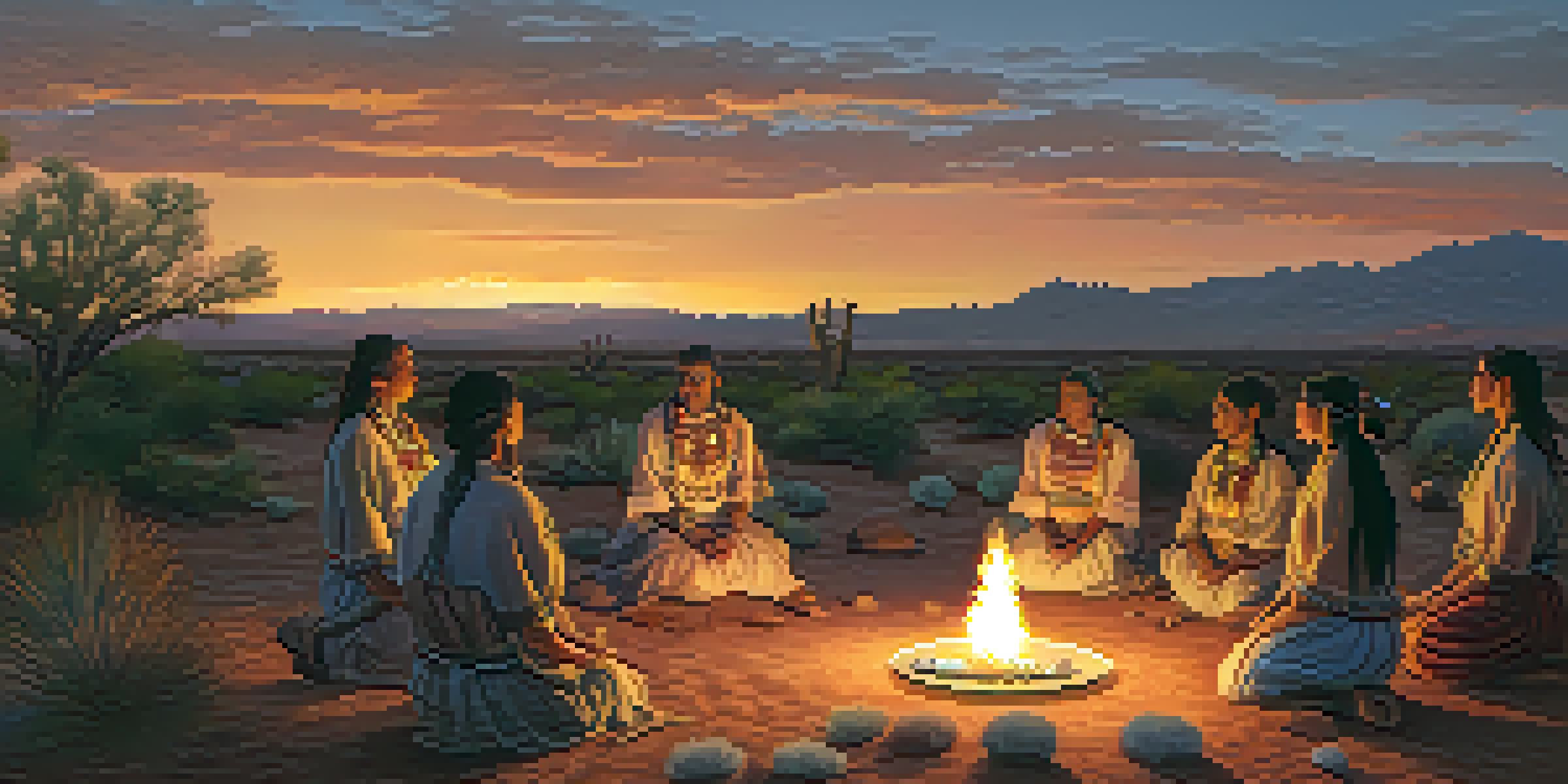The Significance of Peyote in Indigenous Healing Traditions

Introduction to Peyote and Its Cultural Context
Peyote, a small cactus native to Mexico and the southwestern U.S., has been used for centuries in various Indigenous cultures. It contains mescaline, a psychoactive compound that induces altered states of consciousness. For many Indigenous peoples, Peyote is more than just a plant; it’s a sacred medicine deeply intertwined with their spiritual beliefs and healing practices.
The use of Peyote reflects a holistic approach to health, encompassing physical, emotional, and spiritual well-being.
Historically, Peyote has played a significant role in the spiritual and cultural identity of tribes such as the Huichol and the Native American Church. These communities view Peyote as a gift from the Creator, integral to their rituals and communal gatherings. The use of Peyote reflects a holistic approach to health, encompassing physical, emotional, and spiritual well-being.
In modern times, the significance of Peyote continues to resonate, drawing attention from various cultural, spiritual, and psychological perspectives. Understanding Peyote within its cultural context is crucial for appreciating its role in Indigenous healing traditions.
Peyote in Traditional Healing Practices
In many Indigenous healing traditions, Peyote is used as a sacrament to promote healing and connection with the divine. The ceremonial use of Peyote often involves guided rituals led by experienced healers, known as 'roadmen' or 'medicine men.' These ceremonies can last for hours, during which participants seek guidance, insight, and emotional release.

During these ceremonies, participants consume Peyote and enter a trance-like state, where they may experience vivid visions and profound insights. This process is believed to foster personal healing, clarity, and a deeper understanding of one's place in the world. The communal aspect of these ceremonies strengthens social bonds and reinforces cultural identity.
Peyote's Cultural Significance
Peyote is viewed as a sacred medicine in Indigenous cultures, integral to spiritual practices and communal healing.
Peyote's integration into traditional healing practices illustrates the interconnectedness of mind, body, and spirit in Indigenous worldviews. By embracing this holistic approach, healers can address various ailments, from physical pain to emotional trauma, creating a safe space for healing and transformation.
The Spiritual Significance of Peyote
For many Indigenous groups, Peyote is not just a healing tool but a portal to spiritual realms. The visions induced by Peyote consumption can provide insights into personal struggles, guidance for life decisions, and a sense of connection to ancestors. This spiritual journey is often described as a form of communion with the universe, fostering a profound sense of peace and understanding.
Peyote serves as a bridge between the physical and spiritual realms, allowing individuals to explore their inner selves and the greater cosmos.
The spiritual significance of Peyote is reflected in its rituals, which often include prayers, songs, and offerings. Participants may call upon their ancestors or spiritual guides for support and wisdom during these ceremonies. This connection to the spiritual world reinforces the belief that healing extends beyond the individual, impacting the community as a whole.
Thus, Peyote serves as a bridge between the physical and spiritual realms, allowing individuals to explore their inner selves and the greater cosmos. This exploration is seen as essential for personal growth and healing, emphasizing the importance of spirituality in Indigenous cultures.
Contemporary Perspectives on Peyote Use
In recent years, there has been a growing interest in Peyote among non-Indigenous populations, particularly in the realms of wellness and psychedelics. This curiosity often leads to discussions about the ethics of using Peyote outside of its traditional context. Many Indigenous communities emphasize the importance of respecting the plant's cultural significance and the rituals surrounding its use.
As the conversation around psychedelics and mental health expands, the Indigenous perspective on Peyote offers valuable insights. Research suggests that Peyote can aid in treating various mental health conditions, such as anxiety and depression. However, Indigenous voices remind us that these benefits should not overshadow the cultural and spiritual dimensions of Peyote use.
Healing Through Ceremony
Ceremonial use of Peyote promotes emotional release and personal insights, fostering a deep connection to oneself and the community.
The challenge lies in balancing the growing interest in Peyote with the need to honor its traditional roots. By fostering respectful dialogue and understanding, both Indigenous and non-Indigenous communities can work together to ensure the sacredness of Peyote is preserved.
Legal and Ethical Considerations
The legal status of Peyote varies significantly across regions, often complicating its use in both traditional and contemporary contexts. In the United States, for example, Peyote is legal for use by members of the Native American Church but remains illegal for recreational use. This legal framework highlights the importance of protecting Indigenous practices while navigating broader societal interests.
Ethical considerations also come into play when discussing Peyote's use outside Indigenous communities. Cultural appropriation is a significant concern, as non-Indigenous individuals may seek to exploit Peyote for personal gain without understanding its cultural significance. This underscores the need for education and awareness about the complexities surrounding Peyote and its role in Indigenous healing traditions.
Ultimately, respecting the legal and ethical dimensions of Peyote use is crucial for fostering a harmonious dialogue between Indigenous and non-Indigenous communities. By prioritizing these discussions, we can help preserve the integrity of this sacred medicine.
Personal Stories and Experiences
Many individuals who have participated in Peyote ceremonies share transformative experiences that highlight its healing potential. Participants often recount stories of profound insights, emotional breakthroughs, and a deep sense of connection to others. These personal narratives illustrate the power of Peyote in fostering healing and personal growth.
For example, one participant described how a Peyote ceremony helped them confront long-buried trauma, allowing for a cathartic release that changed their perspective on life. Such experiences are common among those who engage in these rituals, emphasizing the importance of the communal and spiritual aspects of Peyote use.
Ethical Use and Respect
As interest in Peyote grows among non-Indigenous populations, it is crucial to respect its cultural roots and the ethical considerations of its use.
These stories not only enrich our understanding of Peyote's role in healing but also serve as a reminder of the importance of community and support in the healing journey. They highlight how Peyote can be a catalyst for change, guiding individuals toward a brighter, more connected existence.
Conclusion: The Enduring Legacy of Peyote
Peyote's significance in Indigenous healing traditions is a testament to the enduring connection between culture, spirituality, and health. As we explore its role in contemporary society, it's essential to remember the rich history and cultural context from which Peyote emerges. Understanding this legacy can help foster greater respect and appreciation for Indigenous practices.
In a world increasingly focused on mental health and wellness, Peyote offers valuable lessons about holistic healing and the importance of community. By embracing Indigenous perspectives, we can gain insights into our own healing journeys and the ways we connect with the world around us.

Ultimately, Peyote stands as a symbol of resilience and hope, reminding us of the power of nature in our quest for understanding, healing, and connection. As we move forward, honoring its legacy will be vital in ensuring that the wisdom of Indigenous healing traditions continues to thrive.